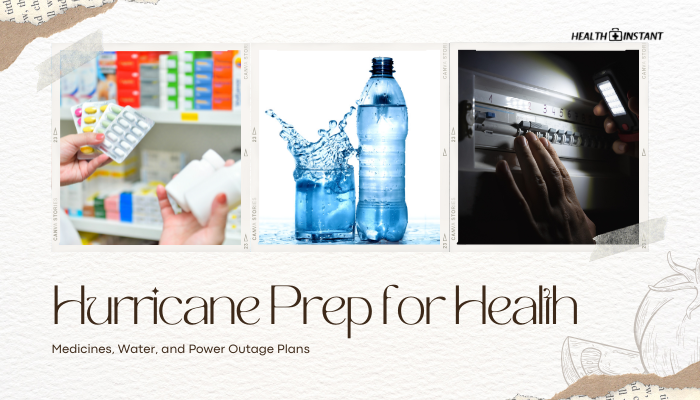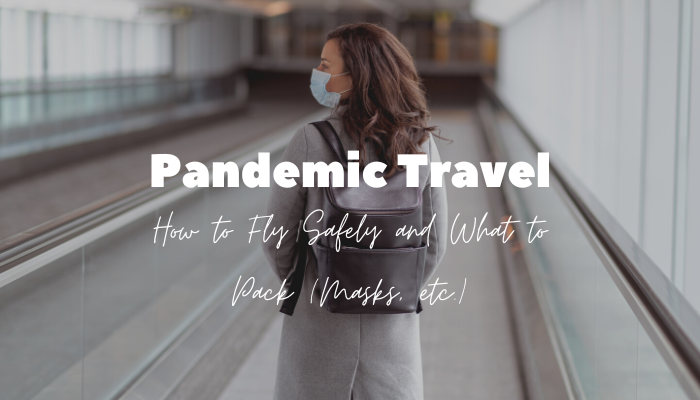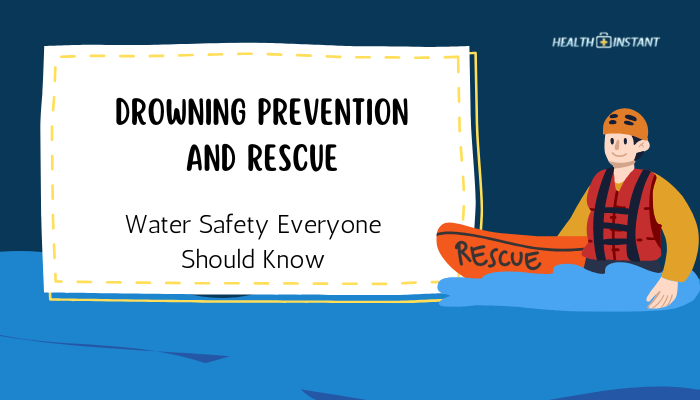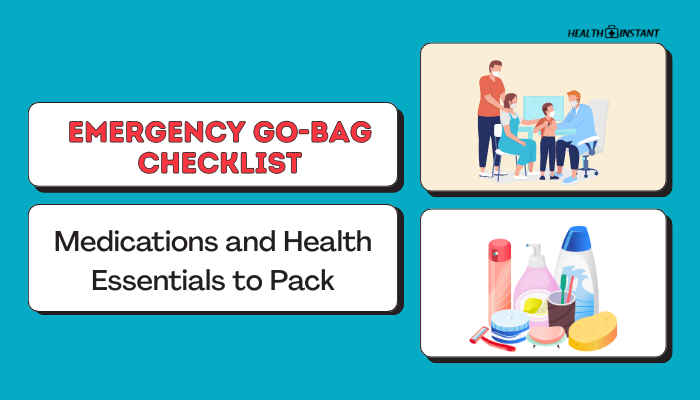Introduction
Disease outbreaks can disrupt societies rapidly. During these events, health officials often call for isolation or quarantine measures to limit the spread of harmful pathogens. While these terms might sound similar, they describe distinct but related strategies. Individuals, families, and communities benefit when they understand each measure, why it is used, and how to adhere to official guidelines.
Isolation separates people who are already ill from those who remain healthy. Quarantine, on the other hand, restricts movement of those who might be exposed but have yet to display symptoms. Each method involves a range of personal and community actions to ensure safety.
They can be mild, such as staying at home, or strict, such as official orders and monitoring. By applying the correct approach at the right time, health authorities aim to cut off infection chains.
However, isolation and quarantine can confuse people, causing anxiety over how long each must last or what the rules are for daily life. Understanding these measures is key to preventing frustration and ensuring they work.
Clarity about the purpose of isolation vs. quarantine helps everyone cooperate, from individuals who suspect they might be infected to entire workplaces or schools responding to official advisories. This guide explains each concept in detail, shows when they are used, and addresses common questions. With this knowledge, you can better support family, friends, or colleagues during outbreaks.
Why Distinguishing Isolation and Quarantine Matters
Both isolation and quarantine are forms of social separation used to stop a disease from spreading. However, the difference between them determines who must follow each method and how they manage daily routines.
For example, someone who tests positive for a contagious disease and shows symptoms is typically placed in isolation. Meanwhile, a coworker or family member exposed to that person but not yet showing symptoms might need quarantine.
These measures, when used correctly, can cut off infection paths. Confusion about which applies to whom can allow new cases to arise. The public often sees them as equally restrictive; yet, the rules differ. Isolation typically has stricter requirements because the isolated person is already contagious.
Quarantine might allow some outdoor exercise or essential errands under specific guidelines, depending on local rules. Knowing the difference helps everyone follow the correct steps.
Public trust in health policies also grows when officials communicate these distinctions well. Citizens become more likely to comply if they understand that isolation is for confirmed or strongly suspected cases, while quarantine is precautionary.
This knowledge helps minimize misunderstandings, frustration, and stigma. In turn, health systems avoid overwhelming surges in clinics or hospitals if people follow appropriate precautions at home.
Historical Background and Key Concepts
Using separation to manage disease is an old idea. The term “quarantine” traces back to at least the 14th century, when ships arriving from plague-affected regions were required to remain at sea for 40 days (the word itself derives from the Italian “quaranta,” meaning forty). Isolation measures later emerged as hospitals and infirmaries set aside specific wards for patients with contagious illnesses like smallpox or tuberculosis.
These strategies evolved as scientific knowledge grew. Researchers realized that people might be contagious before showing symptoms, supporting the practice of quarantine. They also recognized that those confirmed sick were more likely to infect others, underscoring the importance of isolation. Over time, legal frameworks and national guidelines formed around these basic concepts.
Key principles:
- Containment: Restrict movement to reduce possible spread.
- Time Frame: Base separation periods on typical incubation times or the duration someone remains infectious.
- Public Compliance: Relies on trust, clear communication, and established oversight structures.
Modern examples include Ebola responses in West Africa, influenza pandemics, and COVID-19 measures worldwide. Although contexts vary, the basic logic—separating the sick or potentially exposed—remains consistent across history.
Isolation: Keeping the Sick Apart
Isolation is designed for individuals confirmed or strongly suspected to have an infectious disease. It prevents them from coming into contact with healthy people until they are no longer a risk. Isolation often happens in a specialized medical setting if the disease is severe or requires close monitoring. However, mild cases can sometimes isolate at home, depending on official guidelines and the healthcare system’s capacity.
Who Needs Isolation?
People generally require isolation if:
- They have a laboratory-confirmed infection.
- They show classic symptoms and have risk factors (close contact with confirmed cases, recent travel from outbreak areas, or symptoms typical of a known disease).
- They are suspected by health professionals to be contagious while awaiting confirmatory tests.
The length of isolation hinges on how contagious the illness is and how long the person remains infectious. Medical teams usually base this on symptom resolution and negative test results if available.
Types of Isolation
- Strict (Complete) Isolation
- Used for highly infectious or deadly illnesses (like certain hemorrhagic fevers).
- Patients stay in specialized negative-pressure rooms.
- Healthcare workers must wear full protective gear (gown, mask, gloves, face shield).
- Used for highly infectious or deadly illnesses (like certain hemorrhagic fevers).
- Contact Isolation
- For illnesses spread by direct contact (e.g., methicillin-resistant Staphylococcus aureus).
- Requires gloves and gowns. Individuals must limit face-to-face interactions.
- For illnesses spread by direct contact (e.g., methicillin-resistant Staphylococcus aureus).
- Droplet Isolation
- For diseases spread by respiratory droplets (e.g., influenza).
- People wear masks within a certain radius of the patient.
- The patient often uses a mask if they must leave the room.
- For diseases spread by respiratory droplets (e.g., influenza).
- Airborne Isolation
- For highly transmissible diseases by small aerosols (e.g., tuberculosis, measles).
- Requires N95 or higher-level respirators and specialized room ventilation.
- For highly transmissible diseases by small aerosols (e.g., tuberculosis, measles).
Though these categories are more clinical, milder cases at home can adapt some strategies. For instance, if you have an acute respiratory infection, wearing a mask around housemates, staying in a separate room, and cleaning shared surfaces mirror clinical isolation procedures.
Daily Life During Isolation
People in isolation at home may face limitations:
- Confined Space: Ideally, remain in a designated room, use a separate bathroom if possible.
- Limited Visitors: Minimize contact with household members or caregivers.
- Personal Utensils: Avoid sharing plates, cups, or electronics.
- Focus on Treatment: Follow medical advice, track symptoms, and stay hydrated.
Mental well-being is crucial. Being confined can cause loneliness, worry, or boredom. Support from friends or telehealth visits helps. Clear instructions on how to measure temperature, handle laundry, and dispose of tissues or masks ensure contamination risks stay low.
Quarantine: Restricting Movement of the Exposed
Quarantine targets people who might have encountered an infectious agent but do not show symptoms. They may develop illness later if the pathogen is incubating, so authorities ask them to stay apart from others. This measure stops potential carriers from unknowingly infecting the community.
Who Should Quarantine?
Typical reasons for quarantine include:
- Being in close contact with an infected person.
- Living in or traveling from regions with ongoing outbreaks.
- Attending an event or gathering where confirmed cases were identified afterward.
Local health guidelines define “close contact” and trigger quarantine steps. For example, a coworker who spent hours in a small office with a confirmed positive individual may need a 7–14 day quarantine. A neighbor who only walked by the sick person outdoors might not.
Duration and Factors Influencing Quarantine Periods
Many diseases have recognized incubation periods, the time from exposure to symptom onset. Quarantine length often reflects this window. For instance, if a disease has an average incubation of 5 days, officials might request a 7-day or 10-day quarantine to account for variations.
During quarantines:
- Individuals monitor temperature and symptoms, often reporting them daily to local health units.
- If they remain symptom-free throughout, they can resume normal life.
- Symptoms or a positive test result shifts them into isolation.
Real-world events show quarantine durations can change as new data emerges. A novel virus may initially prompt 14-day quarantines, later adjusted if studies suggest a shorter or longer incubation.
Quarantine at Home vs. Dedicated Facilities
Most quarantines happen at home. People reduce outside trips, often limiting them to picking up groceries or urgent healthcare. If the disease is highly transmissible or if living spaces are shared, authorities might place individuals in supervised facilities (hotels, dormitories, or special centers). This can occur when the local system wants stricter control, or the person’s home setup cannot support proper separation.
Dedicated facilities bring daily checks from healthcare staff. They typically offer meals, basic medical supplies, and a private or semi-private room. However, the environment can feel restrictive. Home quarantine is generally more comfortable if the person abides by guidelines. Either way, the principle remains: restricted movement to prevent possible disease spread.
Legal and Policy Frameworks
Governments possess legal authority to enforce isolation and quarantine through public health acts or emergency decrees. Regulations vary. Some nations rely on strong central authority, while others emphasize local or state-level collaboration. The purpose is the same: protect the community from uncontrolled outbreaks.
Key points:
- Public Health Mandates: Officials can issue orders for isolation or quarantine, sometimes with police or judicial enforcement.
- Due Process: In many democracies, individuals can challenge or appeal lengthy confinements.
- Travel Restrictions: During international outbreaks, travelers might face quarantine upon entry if they visited high-risk areas.
Controversies arise when measures appear too strict or indefinite. Balancing individual freedoms with collective safety remains a cornerstone of public policy debates. Communication transparency and scientific backing often drive better acceptance of official rules.
Challenges for Individuals and Communities
Mental Health and Emotional Well-Being
Isolation or quarantine can heighten stress. People face boredom, loneliness, uncertainty about their health, and worry about infecting loved ones. Some might feel guilt or stigma. Others experience anxiety over job security or finances if they cannot work in person.
Online social support, virtual hangouts, and mental health hotlines help mitigate these challenges. However, not everyone has the same digital access or coping abilities. Recognizing these emotional strains is important for health providers and community leaders when establishing support systems.
Job and Economic Implications
Many jobs do not allow remote work, threatening incomes for quarantined or isolated individuals. Governments or employers might offer financial relief or sick pay. However, gaps persist. Gig workers, small business owners, and freelance professionals face tough choices between public safety compliance and meeting basic living costs.
Clear policies can reduce the burden. Some countries or localities provide compensation for lost wages or hazard pay to encourage honesty about symptoms or exposures. This fosters compliance rather than secret attempts to continue working while possibly infectious.
Logistical Constraints
Practical problems often arise:
- Home Setup: Overcrowded or multi-generational households might not have extra rooms or bathrooms.
- Limited Access to Essentials: If no one can deliver groceries or medicine, a quarantined household might struggle.
- Digital Gaps: Scheduling telehealth or remote schooling requires consistent internet or technology.
Community initiatives sometimes fill these voids. Volunteers can deliver supplies. Telecommunication companies may offer short-term subsidies. Nonprofits might supply laptops for families with children needing online classes. Each logistical fix helps quarantined people remain safe.
Tips for Effective Isolation and Quarantine
Preparing Your Home
- Designate a Space: Pick a well-ventilated room to stay if you suspect infection.
- Stock Supplies: Have enough food, medications, cleaning products, and toiletries for the advised period.
- Separate Essentials: Set aside personal plates, cups, or utensils. Keep them clean and away from others.
Staying Connected and Positive
- Use Technology: Video calls with friends or family lessen loneliness.
- Maintain Routines: Wake up, exercise lightly, and keep mealtimes consistent if possible.
- Entertainment: Books, puzzles, or streaming services fill idle time.
When to Seek Medical Care
- Monitor Symptoms: Track fever, coughing, shortness of breath, or new developments.
- Communicate with Providers: Many clinics offer phone or online appointments to avoid in-person visits unless necessary.
- Emergency Signs: If breathing difficulties or confusion worsen, follow emergency guidance. Let responders know if you have a contagious illness or exposure risk.
Examples from Recent Outbreaks
- COVID-19 Pandemic
- Nations used large-scale lockdowns along with precise isolation of confirmed positives.
- Close contacts quarantined at home or in designated centers.
- Strategies varied, but places with strict quarantine often reduced infection peaks.
- Nations used large-scale lockdowns along with precise isolation of confirmed positives.
- Ebola in West Africa
- Intensive measures focused on isolating symptomatic patients in specialized units.
- Contact tracing teams identified those at risk, who then quarantined.
- Extensive education campaigns taught local communities to comply for public safety.
- Intensive measures focused on isolating symptomatic patients in specialized units.
- MERS and SARS
- Past coronaviruses leading to rapid isolation in hospitals once symptoms emerged.
- Quarantine for travelers from affected regions to contain cross-border spread.
- Past coronaviruses leading to rapid isolation in hospitals once symptoms emerged.
These events underscore that while the diseases differ, the principle—separating known or potential carriers—helps break transmission.
Addressing Myths and Misconceptions
- Myth: Quarantine Means You Are Definitely Sick
- Reality: Quarantine is precautionary. Many quarantined people remain healthy but must wait out the incubation period.
- Reality: Quarantine is precautionary. Many quarantined people remain healthy but must wait out the incubation period.
- Myth: Isolation Always Happens in a Hospital
- Reality: Mild cases often recover at home if no advanced treatment is needed.
- Reality: Mild cases often recover at home if no advanced treatment is needed.
- Myth: If I Test Negative Once, I Can End Quarantine
- Reality: One negative test might not detect early-stage infection. Following official guidelines for the entire recommended period is crucial.
- Reality: One negative test might not detect early-stage infection. Following official guidelines for the entire recommended period is crucial.
- Myth: Quarantine and Isolation Are Inflexible
- Reality: Rules differ by region, disease, and personal circumstances. Public health authorities can tailor approaches to local conditions.
- Reality: Rules differ by region, disease, and personal circumstances. Public health authorities can tailor approaches to local conditions.
Clarifying these points reduces panic and fosters rational decision-making.
Balancing Public Health with Individual Rights
Government-imposed separations can raise ethical questions. People fear losing autonomy, privacy, or freedom of movement. Countries with robust legal systems usually provide a process to ensure quarantined or isolated individuals are treated fairly. This can include:
- Ensuring Basic Needs: Food, water, medical care, and communication channels.
- Clear Explanations: Written or spoken notices about why measures apply and how long they last.
- Appeal Rights: Affected persons can sometimes request reviews if they believe measures are unjust or mistaken.
- Protection Against Discrimination: Isolation or quarantine should rely on risk factors, not ethnicity, race, or social status.
When balanced effectively, these measures safeguard collective well-being without causing undue hardship. Public trust grows if authorities use transparent processes and respect human dignity.
Future of Isolation and Quarantine Measures
As medical science advances, quick diagnostic tests and contact tracing technologies evolve. Apps can alert people if they have been near confirmed cases, prompting immediate self-quarantine. Genomic monitoring can identify new variants, adjusting how isolation rules shift. However, challenges remain:
- Privacy Concerns: Digital solutions must protect personal data.
- Equitable Access: Resource-limited regions or older populations might lack the tech or infrastructure for advanced tracing.
- Vaccine and Treatment: Even with breakthroughs, isolation or quarantine might still be needed for those not covered by immunization or facing drug-resistant strains.
In the near term, experts predict a continued reliance on these traditional measures. Rapid global travel will keep fueling potential outbreaks. But stronger global cooperation and real-time data sharing can ensure fewer missteps in applying them.
Conclusion
Isolation and quarantine remain core public health tools when facing communicable diseases. While isolation keeps confirmed or symptomatic individuals away from healthy populations, quarantine applies to those exposed but not yet confirmed ill. Both aim to halt transmission chains. For them to work, people need clear explanations of how and why they must separate, along with logistical and emotional support throughout the process.
Whether you manage a household, lead a company, or simply wish to protect family members, understanding these distinctions helps ensure responsible decision-making. If you become infected or are exposed to someone who is, following guidelines can make a difference in personal, local, and even global health outcomes. Effective isolation and quarantine strategies require everyone’s participation, from medical professionals to neighbors delivering groceries. When done with clarity, respect, and robust communication, these measures support normal life to resume sooner and save many from preventable illness.
References
- Smith J, Doe A. Infectious disease containment strategies. J Public Health Res. 2021;10(2):120–128.
- Lee C, Martin R. Quarantine history in Europe and lessons learned. Eur Infect Dis Rev. 2020;15(3):45–51.
- Carter H. Community response to isolation measures during influenza outbreaks. Int J Epidemiol. 2019;48(4):950–957.
- Wilson D, et al. Legal frameworks for epidemic response. Health Policy. 2021;125(5):345–352.
- Hernandez L, Zhang M. Mental health impact of COVID-19 isolation. Psychiatry Stud. 2022;18(1):66–74.
- Ahmed B, Lee G. Quarantine compliance and economic support policies. Econ Policy Insights. 2021;7(3):210–218.
- World Health Organization. Considerations for quarantine of contacts of COVID-19 cases. 2020.
- Centers for Disease Control and Prevention. Quarantine and isolation guidelines. 2021.
- White P. Evolution of outbreak control from SARS to COVID-19. Pan Infect Dis J. 2022;13(2):88–95.
- Reddy N, Brown S. Ethics of enforced quarantine and public health. J Bioeth. 2019;22(4):299–309.
- Gomez T, Ali K. Rapid testing and future quarantine measures. Lab Sci Tech. 2022;11(2):148–156.
- Waters A, King R. Global health law and epidemic readiness. Int Legal Perspect. 2020;19(1):16–24.







